Unrest and revolution in Egypt has caught the international headlines this week. Mubarak’s ousting has left a military regime holding the reins until the country can catch its collective breath and organise elections in 6 months or so. My visit to Cairo was abbreviated and to attempt any sort of outing with binoculars and camera would be insensitive and invite trouble. In the great scheme of things, my loss is small potatoes compared to the upheaval of life in Cairo, but it has left me without a blog trip this week. So instead, I would like to share with you my recently developed fascination with dragonflies.
Keeled Skimmer, Orthetrum coerulescens UK
Do you ever feel compelled to get out of bed and into the woods on a Saturday morning, but just don’t have the energy after a long working week? Perhaps you have been freely entertained by a wine shlosher and can’t bear the thought of leaving your dark cozy bedroom at 06.00 to go birding with a hang-over. This is why dragonflies were invented! They don’t usually get too active until lunch, a much more sympathetic time of day for someone who enjoys a few glasses to celebrate the weekend. Think of the other advantages of becoming an ‘oder’; no more frostbite from the cutting winds howling in from the across the bay, no more stumbling around in cold dark bedrooms trying to get ready without disturbing the family before setting out to catch first light. Do you remember family? My little boy screamed and ran when he saw me indoors during the daylight one dragonfly day.
Four-spotted Chaser, Libellula quadrimaculata, UK
Take an odonata morning (like a ‘duvet day’, but only half as decadent) when the weather starts to warm up. I bet those of you on the east coast of the USA must think I am quite mad to suggest that the weather might ever warm up again, but it will, and soon. We have passed the middle of February and the first odes to appear will start to do so in six or seven weeks at the beginning of April. In southern states, emergence is a little earlier and the most southerly can boast year-round dragonflies.
Variegated Flutterer, Rhyothemis variegata, Hong Kong
Odonata is the collective term for dragonflies (Anisoptera, odd-winged) and their smaller, even-winged (Zygoptera) relatives, the damselflies. They spend most of their life in the larval stage before bursting, alien-like, through their exoskeleton to attain their adult appearance. I do not aspire to be able to differentiate between species during their their larval period, this is a job for the experts and popular guides required for entry level into this discipline are simply not available.
Exuvia
There is a big gap in the market for adult field guides too. The ornithological world has been blessed with fantastically skilled observers, photographers and artists who have made bird-watching a great outlet for those of us with OCD and listing tendencies, but the odonata world has yet to catch up and put their talent to paper. There are a couple of exceptions that stand as bench marks and show what can be achieved; Warwick and Michele Tarboton have published a superb ‘fieldguide to the Damselflies of South Africa’ for example and their origami masterpiece for the dragonflies is as succinct as anything that could be hoped for in a folded laminate sheet. Their full field guide is eagerly anticipated. Damselflies of the Northeast (USA) by Ed Lam is another beauty, but I understand that these guides were self-published which leaves me with the conclusion that odonates have yet to capture the mainstream imagination. I can’t imagine why this should be.
Common Citril, Ceriagrion glabrum. South Africa
They have a fascinating life cycle from egg, through larval stage, emerging into adult form, by-passing the pupal stage associated with other metamorphosists. Despite the larvae and the adults bearing no resemblance to each another, the latter burst forth, leaving the casts of the former (exuviae) clinging to emergent reeds or grasses. It is a truly remarkable sight to behold on an early summer’s morning and within an hour or so, it pumps blood to inflate its wings, its soft body parts harden and it takes to the air ready for the the adult stage of its life and the challenge of mating and breeding.
They are voracious predators, living off water creatures and even small fish during their larval stage and taking insects, often caught on the wing, as an adult. They will even turn cannibalistic in certain circumstances.
Eastern Pondhawk, Erythemis simplicicollis. Canada
Like birds, they are spread around the world and occupy diverse environments, so you are seldom far from one during their season. Unlike birds, they often allow you to approach ridiculously close to get a photograph.
Halloween Pennant, Celithemis eponina. Fla, USA
I find that they make the perfect accompaniment to a days birdwatching. During the golden hours of the early morning the birds occupy my attention, but as the sun climbs through its arc, the birds become less active and the odes come into their own. They are cold-blooded and need the heat of the day to warm them into action. Once they are up to speed, they feed, protect territories and chase rivals or females, flashing their bright colours in the sunshine and making a scintillating spectacle.
I am lucky that the UK is well provided for with Odonata field guides (but not especially rich in species with just over 50), but even with exhaustive comparisons, identification can be tricky and many species can only reliably be confirmed by examination in-hand. Like Empidonax flycatchers, but without the benefit of a song, some are just too confusing to add to a list as a tick.
Orthetrum sp. Ghana
There are a number of active dragonfly websites which invite photographs from subscribers, but they are as yet incomplete and need more specimen photos and more expertise to help identify the submissions. Dragonfly.net has subdivisions for America, Africa, Asia and Neotropic odes, but sadly has arranged their inventories in latin, alphabetical order. Although they have set themselves a massive task, to document the odonata of continents, they are still the best sites as first stops for identification with some skilled photographers submitting some beautiful pictures.
There are any number of personal blogs and club websites and I am sure that a quick search for your local area will produce a good one. For example, the northeastern USA are spoiled not only in having their damselflies catalogued and described by the aforementioned Ed Lam, they are also lucky enough to have the active Northeast Odonata Yahoo group.


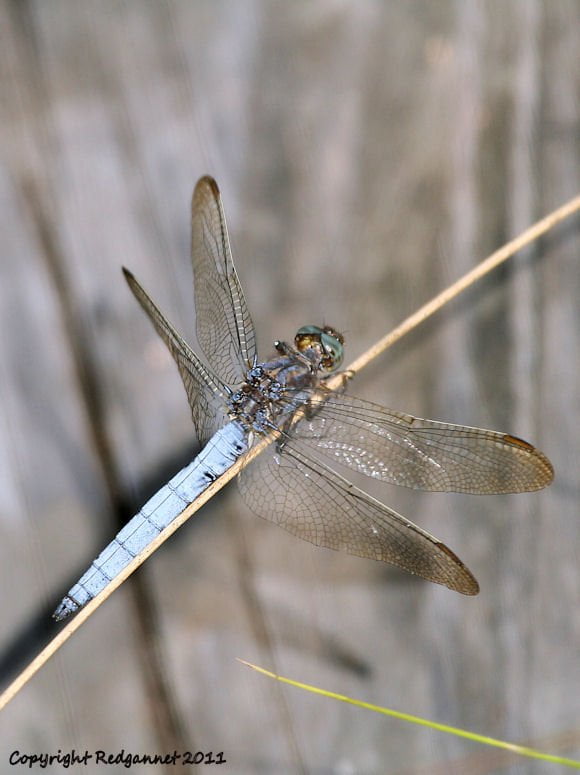
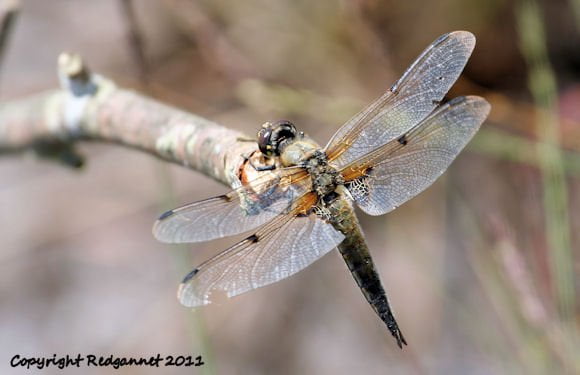
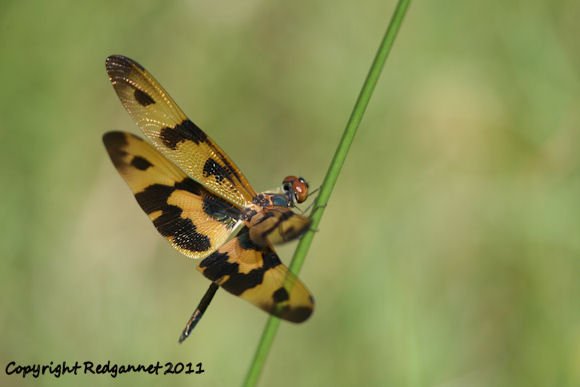
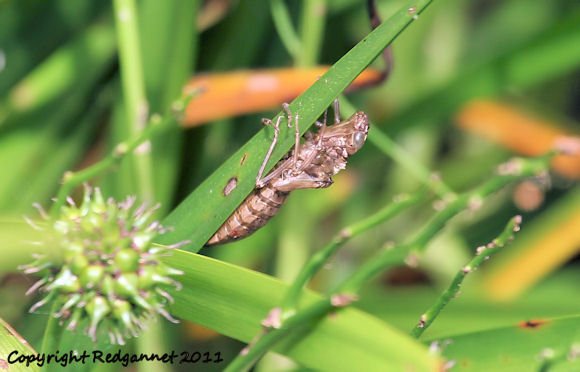
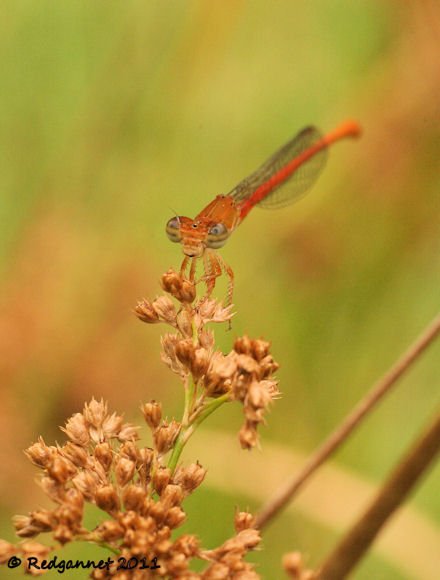
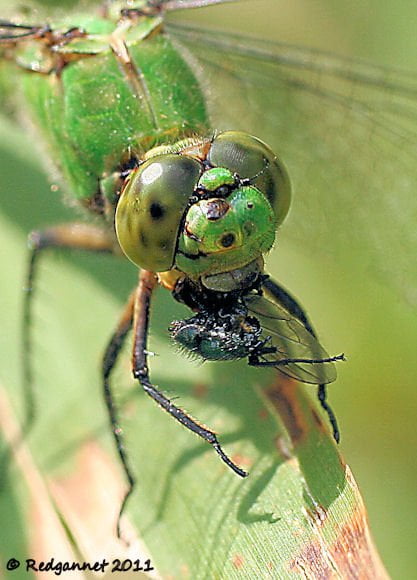
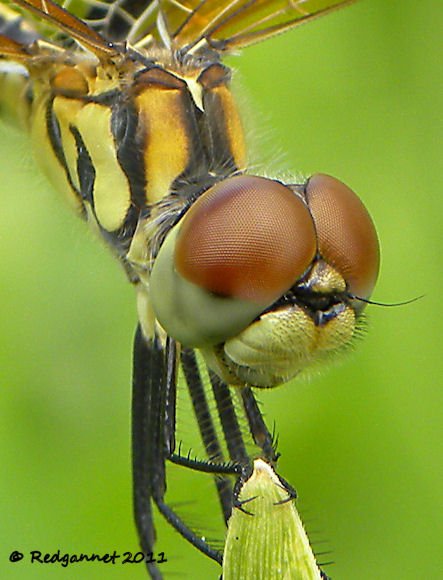
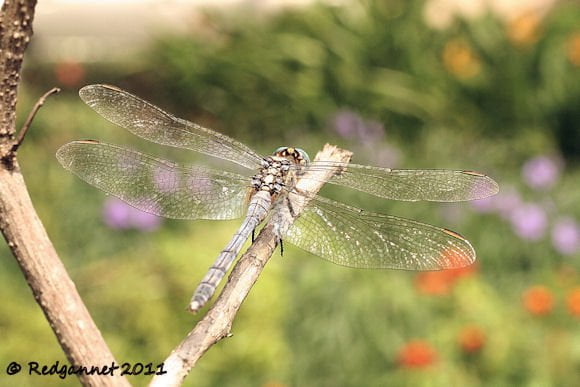

 New writers welcome – please contact us for details.
New writers welcome – please contact us for details.

















Thanks, Redgannet. I love odes.
There’s a great set of books from the North Woods Naturalist Series for any Odonate lovers in the U.S. Midwest. Dragonflies of the North Woods by Kurt Mead and Damselflies of the North Woods by Bob DuBois are both excellent field guides.
It’s great to see some dragonflies in what is the depths of winter here in New York. And these images are magnificent!
Great post. Thanks.
Does anyone know why mostly all dragonflies have a black bar near the tip at the leading edge of each wing. It must be some important survival characteristic since most all species have it.
@Bernie,
the bar to which you refer is known as a pterostigma. It can vary from black through amber and red to white. In damselflies they can be bi-coloured.